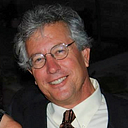John Brown’s Harper’s Ferry Raid
In Class Activity (courtesy of my friends at Teach for Democracy)
In the weeks and months following John Brown’s 1859 raid on Harpers Ferry, the American public was divided over what to make of John Brown. Today, many historians are still divided and conflicted over what to make of Brown.
Directions:
Form a group with three other students. Watch one or more of the following short videos
- John Brown’s Raid (MGH; 4:23)
- America’s First Terrorist or National Hero (Smithsonian Channel; 3:20)
- John Brown’s Bloody End to Slavery (NBC Learn; 2:39)
Then read the article Remembering John Brown.
Then read the following historians’ descriptions of John Brown.
David W. Blight:
Sterling Professor of History, African American studies, and American Studies; Director, Gilder Lehrman Center for the study of slavery, Resistance, and abolition at Yale University. His most recent book, published in 2018, is Frederick Douglass: Prophet of Freedom.
Was John Brown a midnight terrorist or a revolutionary hero? [He]’s a very troubling legacy. Nobody should prettify him and nobody should utterly dismiss him. . . . I think John Brown is our template in American history. . . . John Brown forces us to face the almost natural ambivalences about his acts. He is disturbing and inspiring. . . . He in some ways worked for the highest ideals — human freedom and the idea of equality — but he also used the most ruthless deeds. . . .
Paul Finkelman:
President, Gratz College; former professor of law, history, and public policy. His most recent book, published in 2018, is Supreme Injustice: Slavery in the Nation’s Highest Court.
Brown’s actions in Kansas and at Harpers Ferry were clearly violent. He killed people or at least supervised their death. But was he a terrorist? At neither place do his actions comport with what we know about modern terrorists. . . . So, what in the end can we make of John Brown? If he was not a terrorist — what was he? He might be seen as revolutionary, trying to start a revolution to end slavery and fulfill the goals of the Declaration of Independence. As proslavery border ruffians tried to prevent democracy in Kansas, and were willing to murder and assault supporters of freedom, John Brown surely had a right to defend his settlement and his side. . . . This was not terrorism, but a fact of warfare in Bleeding Kansas. Nevertheless, modern Americans are uncomfortable endorsing his vengeful violence in Kansas, however necessary it may have been.
David S. Reynolds:
Distinguished Professor in the english and american studies programs at the CUnY Graduate Center. His most recent book, published in 2014, is Lincoln’s Selected Writings. He is also the author of the 2005 biography, John Brown: Abolitionist.Distinguished Professor in the english and american studies programs at the CUnY Graduate Center. His most recent book, published in 2014, is Lincoln’s Selected Writings. He is also the author of the 2005 biography, John Brown: Abolitionist.
Undeniably, John Brown was an anomaly — he was an Abolitionist who believed in violence and who actually made war. . . . It is hard to admire someone who directed killings. . . . The Pottawatomie killings were not admirable or legally defensible. But they were explainable, given John Brown’s makeup as it intersected with special conditions of time and place, and given the long-term social tensions that led to these conditions. . . . [The killings] can best be explained as an act of terroism improvised at a moment when outside forces — some local and recent, some national and long-developing — converged. . . . Terrorism is violence that avoids combat, is used against the defenseless (often civilians), and is intended to shock and horrify, with the aim of bringing about social change. . . . Brown’s Pottawatomie murders may qualify as terrorism on these counts. It might be argued that excessive force . . . challenged real social injustice: . . . the twin horrors of chattel slavery and Southern violence.
Lastly
Deliberate in your group to choose the description that seems the most complete and accurate, based on what you know about Brown from the article “Remembering John Brown” and any other reading you may have done about him. Provide reasons for your group’s choice. Finally, choose a spokesperson to share your findings with the whole class.
